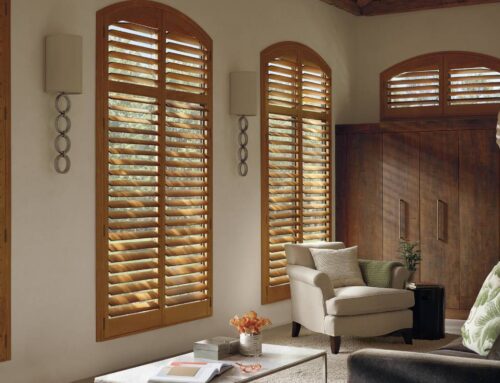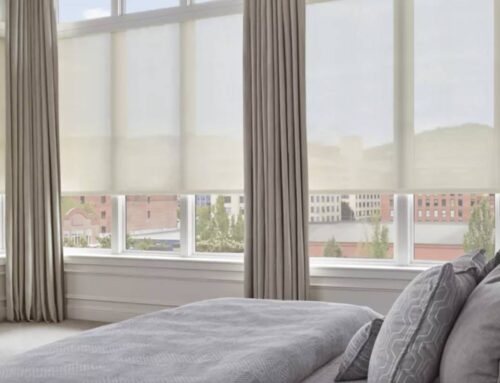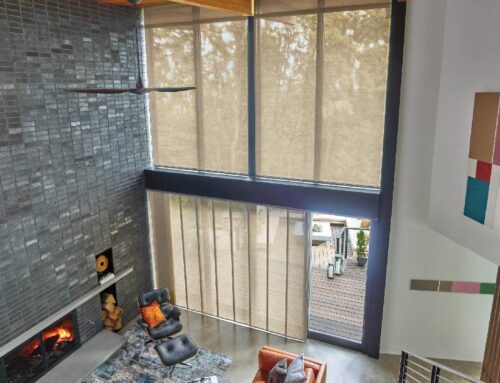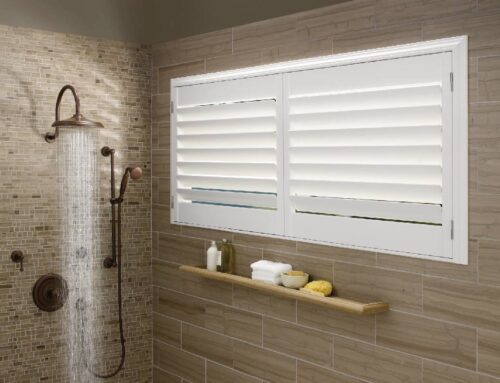For many new homeowners, there’s nothing worse than bare windows or windows covered with ill-fitting or broken window coverings, but with so many types of shades and blinds available, how do you know which is right for you? Your window treatments enhance the overall appearance of a room and provide much-needed privacy and light control.
At Blind and Shutter Guys, for over 20 years, we have helped homeowners in Texas find the best fit for their needs and control light and privacy throughout their home. That’s why we have developed this guide to discuss the differences between window shades and blinds so you can feel confident planning when it’s time to make that decision for your home.
Blinds vs Shades: Making an Informed Decision
So, what’s the difference between blinds and shades?
Blinds are window treatments made with hard slats that can be adjusted to control light and privacy. They possess a great deal of flexibility, as you can adjust the angle of blind slats to achieve a precise level of light or privacy, plus you can roll blinds up to a header for open views.
- Horizontal blinds are incredibly versatile and are available in several materials, including hardwood, faux wood, and aluminum. They can be made to fit many windows, including specialty-shaped windows like arches.
- Vertical blinds are ideal for areas that are wider than they are tall. They open horizontally like curtains and offer 180 degrees of variable light control. You can choose vertical blinds for sliding glass doors and large windows that stack to the side for easy access.
On the other hand, shades are window coverings crafted from a single or continuous piece of fabric. With some exceptions, shades cannot be adjusted for light filtering to the same extent as blinds, and they may not offer as much light or privacy flexibility as blinds as they are made of a single piece of material. However, shades offer much more options in terms of style, texture, and color than blinds.
Some shades even offer the flexibility of blinds like banded shades (also known as dual shades or zebra shades) and sheer shades, which pair opaque fabric slats and translucent fabric for the look and appeal of both blinds and shades.
Now that you know the difference between the two, we can dive deeper into the specifics of each one.
Consider This When Choosing Blinds or Shades
You’re likely leaning toward a few different styles, but we have a few more thoughts for you to consider before making your final choice.
How much light do you want to block?
If you’d like as much darkness as possible, blackout shades are the way to go. You can get a blackout opacity in many styles and colors, even white! Bedrooms tend to be the most popular place for blackout shades because who wants to wake up with the sun if they have the chance to sleep in? We recommend solar or screen shades for rooms where you’d like some natural light but want to reduce heat and glare.
Is privacy your primary concern?
Blinds may block less light than shades but are exceptional at providing privacy. You can adjust the slats to enjoy sunlight and privacy simultaneously. Shades prevent a view of the outside and any incoming light unless you open them entirely or choose a top-up/bottom-down style.
If you have kids or pets in your home
we suggest opting for cordless versions of any window treatments you buy. The cordless look is not only chicer and more uncluttered, but cordless window treatments are also much safer for small children and pets. We offer several different cordless lift options from leading brands, so you can choose the fit that works best for your family—including automated shades and blinds.
Contact Us for Blinds, Shades, Shutters, and More
Have you decided on the right shades or blinds for your home or do you still need some guidance? Give us a call today at (817) 251-4940 or contact us online to schedule a consultation with one of our professional designers.
We are proud to serve Northeast Tarrant County, including Colleyville, Keller, Grapevine, Westlake, Southlake, and Roanoke, TX and look forward to helping you.






